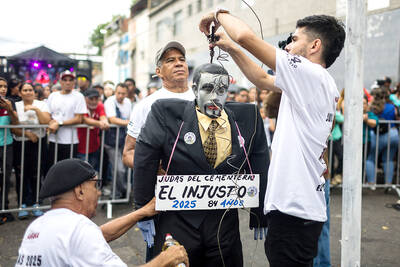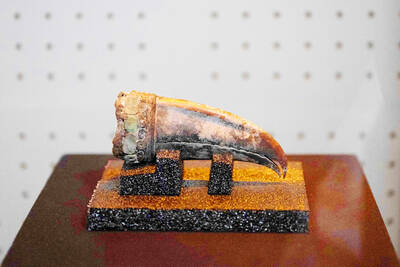On a cold morning in July 2019, more than 30 Native Hawaiian elders gathered on top of a mountain, committed to getting arrested.
“I wasn’t afraid,” said 83-year-old Maxine Kahaulelio. “The moment when the kahea [the call] went out, they said the big machines were coming and they were going to start the desecration... We stood there from 2:30 in the morning ... freezing, 9,000 feet [2,743m] above sea level. They had all their gear, but we didn’t have anything, just blankets and sweaters.”
Kahaulelio and the others were at the top of Mauna Kea, which at 9,966m is the world’s tallest mountain from base to height and is considered sacred by Native Hawaiians.
The arrests of Hawaiian elders, or kupuna, was the climax of a decades-long debate over construction on the mountain and in Hawaii in general.
Some elders have been speaking out against construction on Mauna Kea since the 1970s, when the area began to be used by the University of Hawaii (UH) and the state government for astronomy purposes due to its lack of light pollution, its above-average number of clear nights and its dry atmosphere, which allows more detailed studies. More than a dozen telescopes have been built there in the intervening years.
However, the project the kupuna were protesting was the construction of one of the world’s largest telescopes — the US$1.4 billion Thirty Meter Telescope (TMT) to be built by TMT International Observatory LLC.
Supporters of the TMT say it will bring jobs and educational opportunities to the community through scholarships such as the THINK grant that would provide US$1 million a year to Hawaii Island students.
However, for Kahaulelio and other elders, Mauna Kea is considered sacred in the Hawaiian creation story.
“It’s like a shrine, our temple,” she said.
During the 2019 protest, the group of elders were told to move, but did not.
The standoff continued until law enforcement zip tied the 38 elders’ hands and escorted them to nearby vans.
Kahaulelio said that the decision to have the elders arrested as opposed to the younger protesters was made in a friend’s garage days prior.
“We decided we would get arrested because our hearts are burdened by what you folks went through,” she said about younger people arrested in previous protests.
Ana Nawahine Kahoopi’i, 66, said that the protests in 2019 that led to her arrest were a sight she had never seen.
“There were county police, units from Honolulu and Maui, DLNR [Hawaiian Department of Land and Natural Resources] and the sheriff’s department, they were dressed in riot gear and a sound cannon was being rolled out,” she said.
The incident brought together leaders in Polynesia and other indigenous communities, along with civil rights advocates, lawyers, professors, students and entertainers, who stood in support of Native Hawaiians.
The protests lasted for months, with thousands of people visiting the protest site, which eventually gained a daycare, cafeteria and medical tent.
So far construction on the TMT has not started, having twice been stopped by protesters.
However, the UH Board of Regents recently approved a master plan for the area that accommodates the completion of the TMT.
For months, Hawaiians and allies stayed on the mountain.
When the COVID-19 pandemic hit Hawaii’s shores, some from the movement remained on the mountain, but many left.
Three years later, many of the elders who were arrested are still waiting for their day in court. If convicted, they face a petty misdemeanor charge and 30 days of jail time.
In August last year, a judge dismissed the charges against four of the 38 elders, including in Kahaulelio’s case.
“So, we weren’t trespassing; we weren’t blocking any roads. We weren’t doing any harm. Yes, we were in the middle of the road, to what? To stop the desecration for what other people wanted to do for Mauna O Wakea,” she said. “This is 2022 and our people are still in court.”
Luana Neff is baffled that the cases of four kupuna were dismissed, but the other 34 were not.
“We’ve been in court for almost three years now and it’s crazy,” she said. “We asked for a fast and speedy trial and here we are three years later.”
In the meantime, she said she will continue to spread awareness about Native Hawaiian land rights.
“We’re doing this out of the love of this place, out of the love for our kupuna, out of the love of our land, and out of the love for Mauna Kea, who houses the largest freshwater aquifer on this planet,” she said.

POLITICAL PRISONERS VS DEPORTEES: Venezuela’s prosecutor’s office slammed the call by El Salvador’s leader, accusing him of crimes against humanity Salvadoran President Nayib Bukele on Sunday proposed carrying out a prisoner swap with Venezuela, suggesting he would exchange Venezuelan deportees from the US his government has kept imprisoned for what he called “political prisoners” in Venezuela. In a post on X, directed at Venezuelan President Nicolas Maduro, Bukele listed off a number of family members of high-level opposition figures in Venezuela, journalists and activists detained during the South American government’s electoral crackdown last year. “The only reason they are imprisoned is for having opposed you and your electoral fraud,” he wrote to Maduro. “However, I want to propose a humanitarian agreement that

ECONOMIC WORRIES: The ruling PAP faces voters amid concerns that the city-state faces the possibility of a recession and job losses amid Washington’s tariffs Singapore yesterday finalized contestants for its general election on Saturday next week, with the ruling People’s Action Party (PAP) fielding 32 new candidates in the biggest refresh of the party that has ruled the city-state since independence in 1965. The move follows a pledge by Singaporean Prime Minister Lawrence Wong (黃循財), who took office last year and assumed the PAP leadership, to “bring in new blood, new ideas and new energy” to steer the country of 6 million people. His latest shake-up beats that of predecessors Lee Hsien Loong (李顯龍) and Goh Chok Tong (吳作棟), who replaced 24 and 11 politicians respectively

Young women standing idly around a park in Tokyo’s west suggest that a giant statue of Godzilla is not the only attraction for a record number of foreign tourists. Their faces lit by the cold glow of their phones, the women lining Okubo Park are evidence that sex tourism has developed as a dark flipside to the bustling Kabukicho nightlife district. Increasing numbers of foreign men are flocking to the area after seeing videos on social media. One of the women said that the area near Kabukicho, where Godzilla rumbles and belches smoke atop a cinema, has become a “real

Archeologists in Peru on Thursday said they found the 5,000-year-old remains of a noblewoman at the sacred city of Caral, revealing the important role played by women in the oldest center of civilization in the Americas. “What has been discovered corresponds to a woman who apparently had elevated status, an elite woman,” archeologist David Palomino said. The mummy was found in Aspero, a sacred site within the city of Caral that was a garbage dump for more than 30 years until becoming an archeological site in the 1990s. Palomino said the carefully preserved remains, dating to 3,000BC, contained skin, part of the